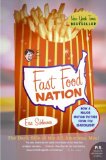Product links support this website. Details.
 Concluding yesterday’s 24-page, 24-hour zine, I learned a lot.
Concluding yesterday’s 24-page, 24-hour zine, I learned a lot.
(Here’s the link to the printable zine: 24-hour zine download.)
I’m still not sure if I’m going to try a second one for this challenge. Probably not.
(If I had more time, I might. With just two non-weekend days left in the month, it’s probably not wise to leap into a second zine marathon.)
Reviewing the zine I created in the past day or so… it’s actually pretty good, for a first-time challenge.
Here’s what I learned during the 24-hour zine project:
1. I’m at my best, creatively, in the morning. I’m also a psycho-cranky perfectionist late in the day, or when I’m tired… which are often the same thing.
2. Our society says one thing but does something else.
For example, gov’t healthcare representatives say the same things as many leading health experts: Eat more veggies, grains, legumes and less fatty meats and dairy. However, the gov’t then subsidizes in a way that makes the unhealthy diet the more affordable one.
The odd thing is: As I was researching spending differences between the 1951 household budget (see the graph below) and today, people spent nearly twice as much on food (in income percentage terms) in 1951 than they do now. I’m still wrapping my brain around that. I mean, are we putting advertising-driven luxuries ahead of how well we eat, or what?
The zine will be available as a download (PDF), next week. (UPDATE: Yes, and here it is: 24-hour zine download.)
Meanwhile, here’s the text from the 25th page. It didn’t fit into the zine.
What could have been the 25th page of my 24-hour zine
As I was pasting up this zine, I began searching for answers: Did a 1951 household budget look about the same as ours, allowing for inflation?
According to Helium, “In the 1950s, frugality and conservative spending was valued and happiness was desired more than riches. The incomes of celebrities were not often discussed in the 1950s, nor were their excessive purchases.”
Here’s what I’ve found: In the typical 1951 household budget, American families spent 22 percent of their incomes on food, or about $814.
We spend about 12% of our income on food ($6,133), and nearly half of that is spent eating outside the home.
 According to Eric Schlosser in Fast Food Nation, Americans spend more on fast food than they do on higher education. He also says, “They spend more on fast food than on movies, books, magazines, newspapers, videos, and recorded music – combined.”
According to Eric Schlosser in Fast Food Nation, Americans spend more on fast food than they do on higher education. He also says, “They spend more on fast food than on movies, books, magazines, newspapers, videos, and recorded music – combined.”
(Interestingly, about 40% of every 1951 dollar spent on food went to the producers… the farmers. Today, it’s just 20%.)
Here are other figures that I found online:
| Item | 2007 | 1950s |
| Food | 15% | 32% |
| Housing | 43% | 22% |
| Clothing | 4% | 12% |
| Transportation | 18% | 15% |
| Medical Care | 6% | 5% |
| Recreation | 6% | 2% |
| Education & Communication | 6% | n/a |
Ref: http://financialedge.investopedia.com/financial-edge/1009/50-Years-Of-Consumer-Spending.aspx (As of 2017, no longer online.)
I’m not sure where I’m going with this, but in the past 20 hours (or so), I’ve certainly uncovered a lot of questions.
In my spare time: There’s something to be learned in this. Since I have a huge stack of 1951 newspapers, I plan to analyze 1950s’ lifestyles — and the 1951 household budget — in more detail. Because yes, I’m not only an artist, I’m also a geek.
Amazon and the Amazon logo are trademarks of Amazon.com, Inc, or its affiliates. As an author and affiliate, I may earn a small commission if you purchase anything through my links. That does not affect the item's price, and I only link to products that I use and like, myself.

I’m sure part of it is also that food has gotten cheaper, I barely remember back in the early 70s when meat was a luxury. Now, thanks to the proliferation of high yield corn etc, it’s a lot cheaper. King Corn was a good reminder of that. Apparently a lot of the policies put into place under Nixon/Earl Butts had a lot of influence on that. Corn, corn, corn. 🙂
Hi Andi,
I’m sure you’re right. I’m also looking at the quality of the food we eat… the chemicals and automation that result in cheaper food. Of course, that leads to questions about nutrition and why so many farming practices are legal in the States but illegal in several other countries… notably, in the UK.
It’s an interesting path we’ve chosen. I’m contrasting the economics of both eras, as well as how much time we take to relax, create art, etc. I’m not convinced that all the tradeoffs have been worthwhile, and where I want to modify our lifestyles.
For the price of access to 200+ cable TV channels each month, I could buy an annual membership at one museum each month, instead. (MFA, Isabella Stewart Gardner Museum, Boston Mus of Science, Sturbridge Village, etc.)
Or, every six months — off-peak — we could get on a plane and spend a weekend at the Louvre, or any of the free museums in London.
That’s tempting.